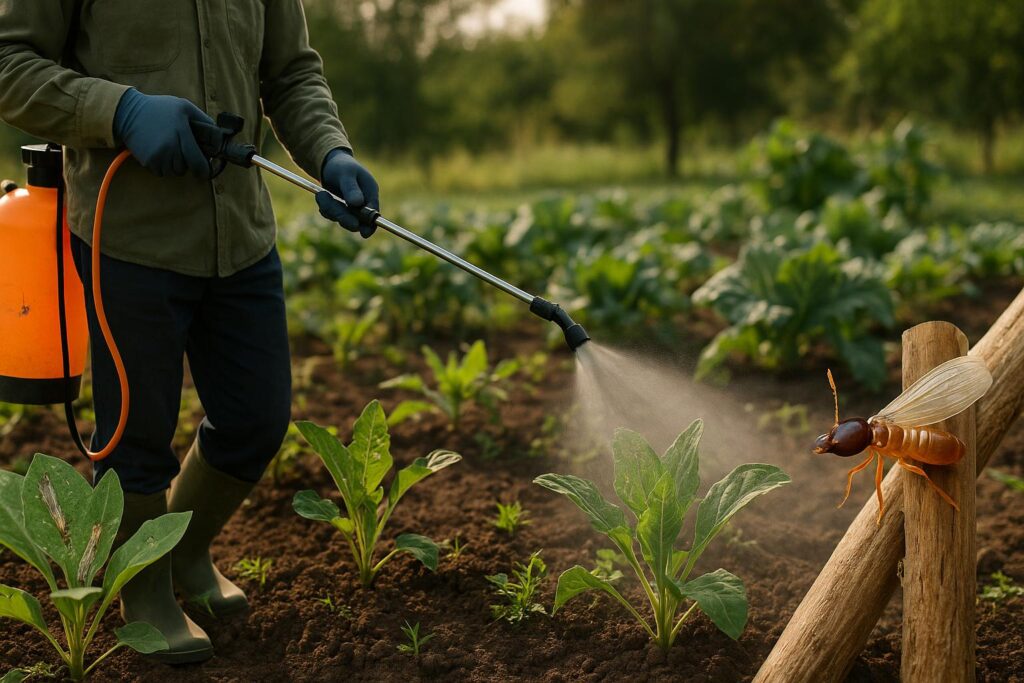
Every successful harvest carries a story—of timing, weather, soil health, and seed genetics. However, one of the most overlooked aspects of this high-stakes performance is the defense against mildew. This insidious enemy of agriculture creeps in silently, weakens plant defenses, and decimates potential long before the combine harvester arrives. What lurks behind those green rows and ripe grains is a tactical war that few talk about—until it’s too late.
The Mildew Menace: More Than Just Surface Damage
Mildew on leaves is more than simply a visual issue. This living, adaptive organism depletes plant energy, interferes with photosynthesis, and creates an environment that can lead to secondary infections. Although distinct organisms produce them, the two most prevalent threats—downy mildew and powdery mildew—cause comparable destruction. According to a recent assessment, mildew is responsible for more than 30% of crop output losses worldwide, yet pests and drought receive more public attention.
The risk is increased in crops such as soybeans, wheat, grapes, and cucurbits, where mildew can impair post-harvest quality and storage in addition to stunting growth. Initially, white patches may appear innocuous, but they conceal a microbial attack that alters the field’s fate.
Detection and Recognition: Spotting the Invisible Early
Farmers and agronomists must rely on acute observation and pattern recognition to catch mildew early. Symptoms often include:
- Pale yellow spots or patches that spread rapidly
- White or gray fungal growth under or on the surface of leaves
But visual signs alone aren’t enough. By the time mildew becomes visible, it’s often in a reproductive stage, releasing spores. Early detection technologies like thermal imaging and spore traps help farmers anticipate outbreaks even before symptoms appear. These tools, combined with phenological data and historical weather trends, form the front line of defense.
Environmental Triggers: Why Mildew Hits When It Does
Unlike other crop issues, mildew thrives in specific, predictable conditions. Its growth is accelerated by:
- High humidity and moderate temperatures (15–25°C)
- Dense crop canopies that trap moisture
- Poor air circulation in fields
In many regions, mildew’s arrival follows seasonal monsoon cycles or periods of unseasonal rainfall. In vineyards of southern Europe, for instance, mildew outbreaks spike within 72 hours of extended leaf wetness. Knowing when conditions turn favorable for mildew allows farmers to act preventively rather than reactively.
Proactive Defense: Building Resistance and Readiness
Prevention is the first line of defence against mildew, not fungicide. Selecting resistant cultivars can have quantifiable effects. For instance, controlled trials have shown that hybrid lines selected for mildew resistance can lower infection rates in cucurbit crops by as much as 65%.
Field cleanliness is just as important as seed selection. Mildew spores can overwinter in weedy borders, crop detritus, and contaminated plant leftovers. Improved airflow and decreased surface moisture are achieved by canopy density management and cleaning in between cycles.
The plant’s epidermal layers can be strengthened by using silicon-based amendments and calcium-rich foliar sprays, which will make it more difficult for mildew to infiltrate.
Chemical Counterpunch: Strategic Use of Fungicides
When prevention isn’t enough, intervention becomes essential. Fungicides serve as a sharp sword against mildew, but only when used strategically. Contact fungicides remain on the leaf surface, while systemic options move through plant tissues for broader protection.
One challenge is resistance buildup. Mildew pathogens mutate quickly under chemical pressure. This is why rotating fungicide groups and applying them at precise intervals is key. Among the more targeted solutions, products such as triazoles and strobilurins have demonstrated strong efficacy. For specific needs in rice and vegetable crops, many farmers opt to buy kitazin fungicide, which offers effective control against early-stage mildew development in areas with heavy monsoon conditions.
Application matters too—timing it at the first sign of disease or, ideally, a few days before expected weather shifts that favor mildew growth. Over-application, however, leads to soil accumulation and non-target impacts.
An Integrated Mildew Management Plan
No single solution can carry the entire weight of mildew defense. The most sustainable results are achieved through integrated approaches that balance technology, chemistry, and biology.
Farmers across North America are increasingly turning to biocontrol agents like Ampelomyces quisqualis, a parasitic fungus that feeds on mildew colonies. These biological allies offer suppression without the buildup of resistance.
Mulching and intercropping also influence the microclimate around plants. Studies from India’s dryland farms reveal that mulched plots reported 18% less mildew due to reduced leaf wetness and soil splashing. Intercropping with strong-scented herbs like basil or marigold deters spore movement and improves pollinator visits.
“Mildew reminds us that nature fights back—not with drama, but with persistence. And persistence requires respect.”
Global Perspective: Mildew and Food Security
Mildew isn’t a regional problem. It’s a global one. As temperatures rise and rain patterns shift due to climate change, mildew is expanding its reach. Places once too dry for downy mildew now report annual losses. Vineyards in Canada, for instance, are now adopting mildew protocols borrowed from Italy and France.
Organizations like CIMMYT have developed open-source mildew-resistant wheat lines, contributing to food security across South Asia and Sub-Saharan Africa. Their work highlights the global scope of this pathogen and the collaborative solutions being implemented to combat it.
Precision Agriculture and AI: The Future of Mildew Monitoring
Tech is rewriting how we deal with fungal pathogens. AI-powered apps can now analyze leaf photos, compare them against massive image databases, and provide instant diagnoses. Drone-enabled monitoring helps map mildew hotspots across thousands of acres without requiring personnel to step into the field.
Platforms like Sentinel Hub use satellite imagery to detect chlorophyll stress—an early sign of mildew—on a macro scale. This allows governments, cooperatives, and private farms to collaborate and coordinate response plans efficiently.
FAQs
- How do mildew spores spread between fields?
Spores travel via wind, water splash, tools, and even farmhands. Contaminated equipment is one of the most underestimated vectors. - Can mildew be eliminated once it infects a plant?
No. It can be managed or reduced, but systemic infections are difficult to fully eradicate without damaging the plant. - What crops are most vulnerable to mildew globally?
Grapes, cucurbits (like melons and squash), soybeans, and wheat are among the most frequently affected crops. - Is organic mildew control effective at scale?
It can be, but usually needs more frequent application and integration with other management practices. Biofungicides and oils like neem or potassium bicarbonate are popular organic options. - Why does mildew keep returning each season?
Surviving spores in plant debris or soil, favorable weather, and lack of rotation or resistant varieties create conditions for repeated outbreaks.
What We’re Really Fighting For
This isn’t just about protecting leaves or keeping fruit unblemished. Defending against mildew is a matter of defending yield, income, and food security. It ensures that the work that starts with planting doesn’t end in waste. Farmers are up against an evolving, adaptive force—and they meet it with strategy, vigilance, and science.
So next time you see a clean harvest rolling in under a sunset sky, remember: someone, somewhere, won the battle against mildew before that crop ever saw the light. And behind that victory lies planning, action, and a deep understanding of an invisible enemy.




